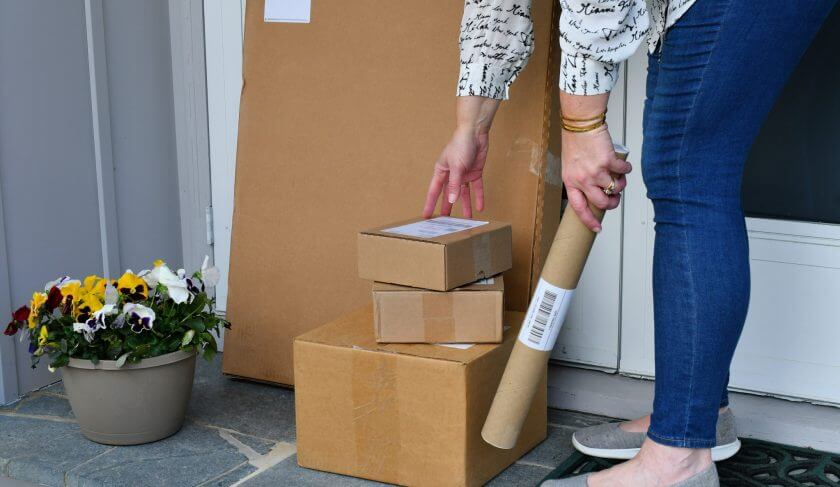
A fresh start. A clean page. A new leaf. You’ve heard them all before, but there’s something about starting a New Year that just feels different. Maybe it’s the blank calendar on the fridge, or the crisp new 2021 planner that smells like bookstores + limitless possibilities. Whatever it is, the New Year is calling us all to step away from 2020’s bad habits — specifically the bad spending habits we adopted last year. Because if last year were an ex-boyfriend, we would be blocking that number, deleting all the pictures, and taking revenge the best way we know how: by living our best lives.
And sure, you can make important life changes anytime you wish — sometimes the best epiphanies come on a random Tuesday in August when we least expect them — but why not harness some of that New Year juju and make the radical shift you’ve been seeking now?
What kind of radical shift, you might ask? Simply put: Far too many of us adopted some pretty bad spending habits in 2020. Some of them weren’t our fault (we’re going to be recovering from the pandemic’s economic fallout for years to come) but some of them were, and the most important thing is that we own our mistakes and look ahead —ahead to a future where we’re making better, more empowered decisions with our money, every day. To help us find our path forward, we highlighted three terrible spending habits that it’s absolutely time kick to the curb, once and for all. With a little diligence and a pinch of that New Year resolve, we’re sure you can start making better choices today— and stick to your decisions all year long.
Reign in your online shopping
The holidays are over, so you have absolutely no excuses to keep looking for online deals. Technology makes it easy to purchase anything you could ever need or want with just a few taps. And the pandemic has only added to the surge in online shopping … but while that’s been convenient for us, it’s also led to a marketing surge from our favorite brands. They know they have a captive audience that’s endlessly scrolling all day (and sometimes even all night) and the more time we spend looking at increasingly dazzling advertisements, the more likely we are to make a purchase.
A good friend of mine almost always institutes a no-buy month to help kick her bad spending habits to the curb, and this year was no exception (and perhaps never more important.) She spent no money on eating out, entertainment, or clothes. She works on eating her way through her stocked pantry, and only grocery shopps for the perishable items she needs to make a meal. It’s a reset that’s relatively easy to stick to. Pick a month and try it out for yourself! If you have an app that tracks your spending, you’ll quickly see how much money you’ve saved.
Pay yourself first
If you haven’t set up automatic savings for yourself, it’s time to start. “Start with $20 per month,” says Melanie Lockert, founder of Dear Debt and Mental Health and Wealth. “You can schedule automatic transfers from your checking to savings right after payday.” If you can afford to save more, do it! But if saving feels impossible, start small.
But saving is only half of the battle in quitting this bad spending habit. “It’s important to look at your expenses and see if there are ways to cut back or eliminate expenses,” Lockert says. Are there subscription services you could live without? What about the amount you spend on takeout?
Pay your credit card balance in full each month
We know, you’ve heard 1,000 times over how bad it is to carry a credit card balance. But when you do, you’re literally giving your money away every month … which is what makes that kind of debt so toxic and so frustrating! “Let’s say your APR is 23%,” says Bill Hardekopf, CEO of LowCards.com. “Every time you use that card, you’re giving a monumental tip to the credit card company. You’re getting charged 23% extra on everything you’re buying if you’re not paying it off each month.”
If you’re in credit card debt, the first thing you should do is immediately stop using your credit card. If you owe money on multiple cards, the second thing you should do is to create a spreadsheet with your balance and APR for each card. “Select the card that’s costing you the most amount of money and pay that card off immediately,” Hardekopf says. “Pay the minimum on the other cards and throw [the rest of your money] at the card with the highest interest rate.”
Hardekopf also suggests calling your credit card company and signing up for text and/or email alerts. That way, when your balance is coming due, you’re alerted to pay it. “Once you miss a payment, you’ll get a late payment fee, and your APR will immediately go up,” he says. Don’t chance it.
Another idea for making that credit card debt vanish quickly is to make “micropayments.” Many people are under the false assumption that you can only make one credit card payment per month. You can make as many as you want! If you’re able, in addition to the regular monthly payment you’d make, add in another payment every month or two to help whittle down your balance and get rid of this bad spending habit once and for all.
MORE ON HERMONEY:
- Could 2021 Be The Year You Start — And Stick To — A Budget?
- The 6 New Rules Of Online Shopping For 2021
- 5 Places To Tighten Your Budget If Your Spending Habits Have Changed
SUBSCRIBE: We’re changing our relationships with money, one woman at a time. Subscribe to HerMoney today.







